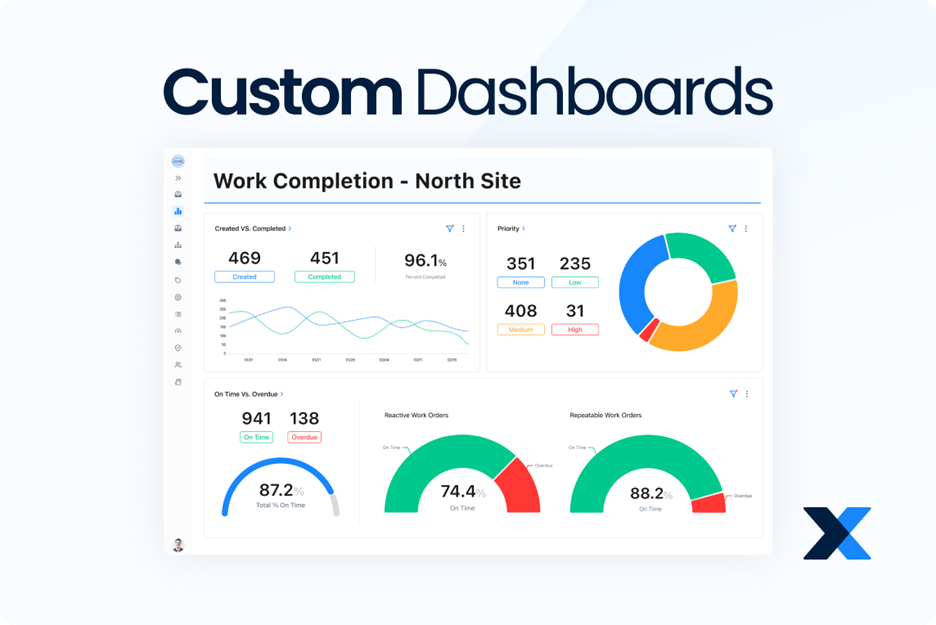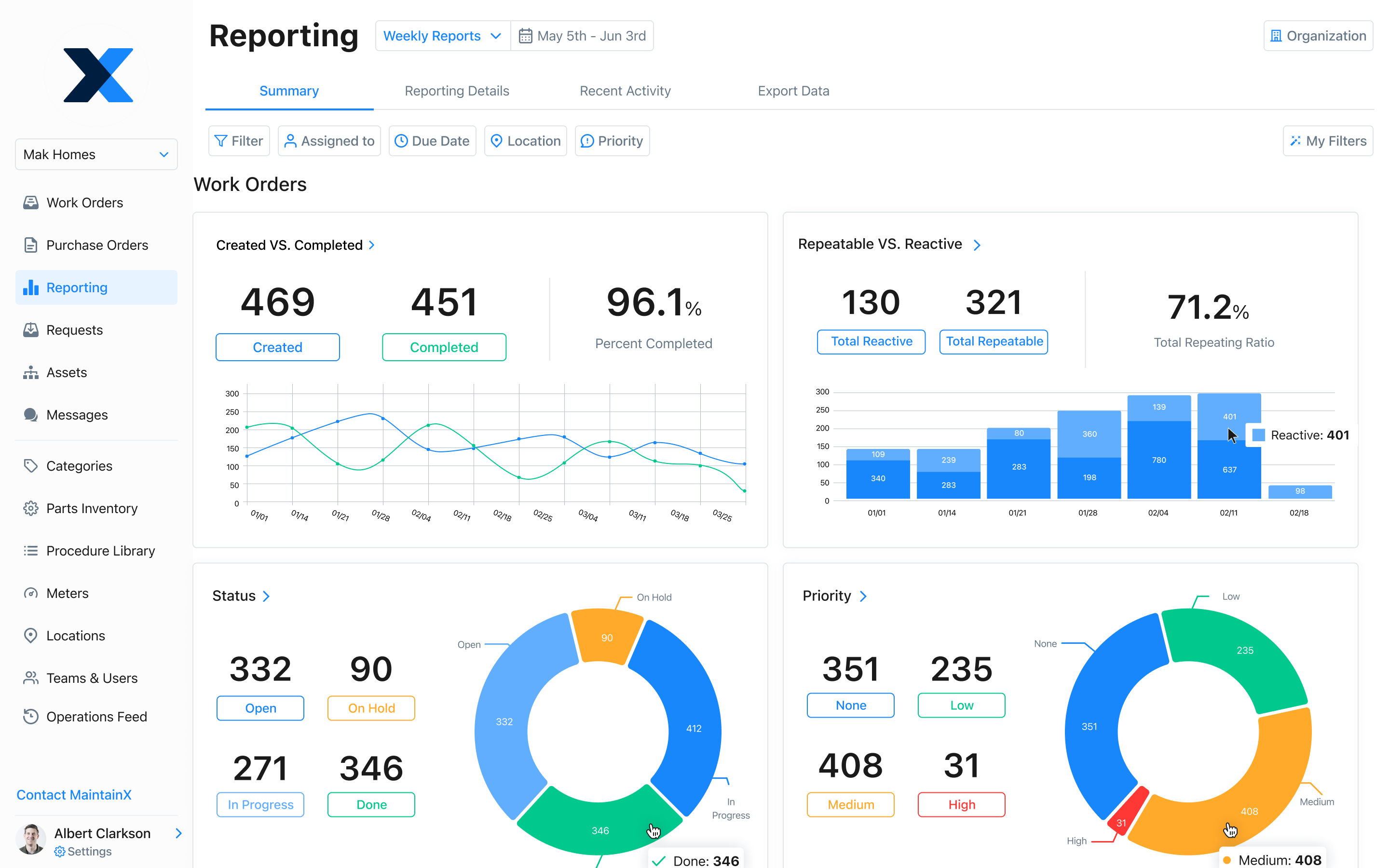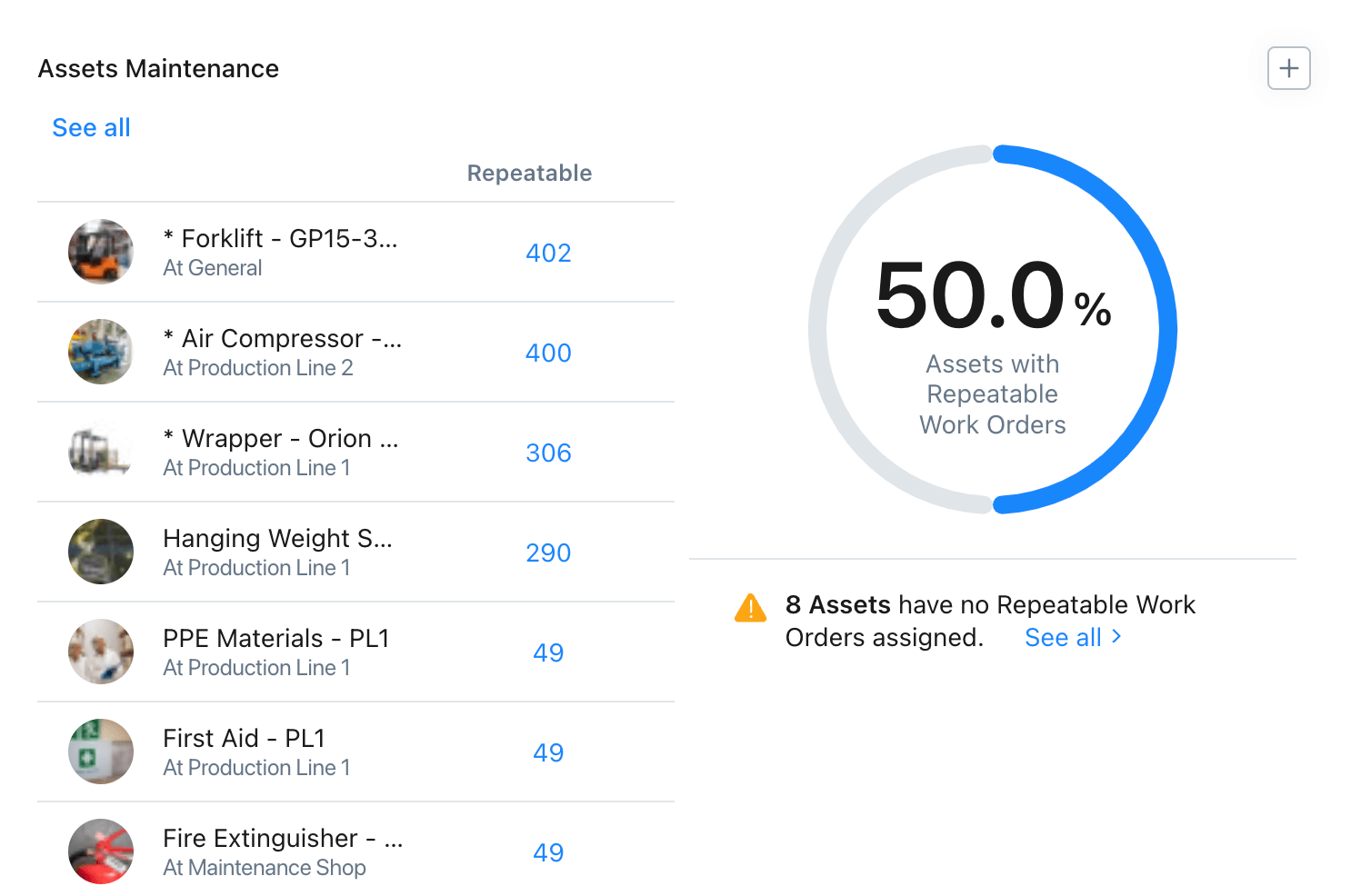
It’s not uncommon to see the terms “Big Data” vs. “Smart Data” used similarly or interchangeably across the manufacturing industry. However, while it’s true that concepts are interrelated, they aren’t the same thing. Sure, they both refer to particular types of data that inform technology and processes, especially on the Internet. However, there are crucial differences between big data and smart data.
Understanding these differences is helpful, especially when working in maintenance and manufacturing. As McKinsey puts it, “Many companies in heavy industry have spent years building and storing big data but have yet to unlock its full value.”
Let’s consider what big data vs. smart data are and how to get the best of them.

Big Data
Big Data refers to data that is too ‘big’ to handle in typical or regular ways. Datasets that fall under the big data umbrella are too large or complex to manage using standard data-processing tools.
To properly define big data, four main concepts are necessary. These concepts relate to data collection, data management, and data sources. The concepts in question are volume, velocity, value, and veracity.
- Volume refers to the size of the data and the kind of data storage required
- Velocity refers to the speed of capturing the data
- Veracity is a measure of the quality of the data
- Value refers to the usefulness of the data
How Is Big Data Used?
Imagine you’re running an organization or a team that manufactures consumer products and want to understand your customer base better. You might be looking for information on the segments where your products are most popular. Do you get most of your business from millennials or boomers? Are you more popular with white or blue-collar workers? This is where big data comes in.
When companies want to carry out these kinds of advanced user analytics, they gather large amounts of data and use data analysis to extract value from them. In many cases, big data can also be purchased from third-party sources, but the process is the same: Use advanced analytics to find correlations and then, if need be, build predictive models.
These predictive models are used to analyze and understand behavior in various fields like healthcare and asset performance. The same principle applies: Get a large amount of data on asset lifecycles and their performance and use predictive analytics tools toward forecasting. This can help with figuring out when your assets will fail and, by extension, knowing when to perform preventive maintenance to decrease downtime.
“The term smart manufacturing refers to a future-state of manufacturing, where the real-time transmission and analysis of data from across the factory creates manufacturing intelligence, which can be used to have a positive impact across all aspects of operations.
Journal of Big Data
Smart Data
When it comes to big data, the crucial part is the sheer amount of the data. Due to the often overwhelming quantities of data, you’ll have to wrangle, not all of it will be valuable. In addition, the majority of big data is unstructured data. As a result, when dealing with these large data sets, there are several steps to go through. You’ll often need to sift through a significant portion of the data, filter out what is valuable, and discard the rest.
This is where smart data comes in. Smart data is big data filtered and condensed into only the most valuable and functional components. By using intelligent algorithms and big data technologies, you can extract the essential elements of large data sets. By doing so, you’ll set the stage for data-driven decision-making.
Big data analytics is just one component of the smart data narrative. Smart Data plays a significant role in Industry 4.0. It also refers to information gathered by smart sensors utilizing Internet of Things (IoT) technology. Smart data is processed and acted upon immediately by smart management systems rather than relying on conventional cloud computing analysis.

How Is Smart Data Used?
Smart data has a wide range of uses in manufacturing operations. For example, running a smart factory can help improve your supply chain management. Imagine having smart sensors that remotely control your warehouses’ temperature, humidity, or other conditions. You’ll never have to worry about raw materials going bad or final products going wrong because you can maintain optimal quality control conditions from wherever you are. Not only will you rest easy, but your customers will have the best product quality.
Even before going into the supply chain, smart data can help improve your manufacturing processes. Smart manufacturing encompasses everything from using sensors to employing production process optimization to scheduling predictive maintenance to ensure your assets don’t break down. This will help reduce your maintenance costs and improve your bottom line.
“Predictive maintenance (PM) comes with a sweet spot, however, where conditions enable it to add the most value. PM requires relevant and acquirable data to feed the machine learning, the data and potential failure sources should be of moderate volume to allow for meaningful results, and the economic stakes have to be high enough to warrant the invest of time and capital. PM is also an illustrative example of how success in exploiting Industry 4.0 technologies is about going smart, not going big, especially when it comes to data.”
IMD
Smart data can also be used for machine learning. Instead of traditional data science methods, organizations like manufacturing companies can train artificial intelligence platforms to improve their business intelligence and produce valuable insights.
Smart Data vs. Big Data: Which Way to Go?
Based on the above, it’s probably clear which way we lean. In general, smart data is easier to handle, more insightful, and more efficiently applicable than big data. This isn’t to say that big data isn’t valuable. Far from it. For example, big data gives you great insights into consumer behavior. However, there are two main reasons why companies might lean toward smart data.

Smart Data Is More Accurate
The nature of dealing with data is that there is always a risk of inaccuracy. In collecting large amounts of data, the risk is higher. For example, a Deloitte survey discovered that 71% of respondents said the data collected about them from third-party big data sources were inaccurate.
The potential consequences are significant if you use this data to make business decisions. Imagine deciding to market your products to a population segment based on their assumed spending habits, only to see far less return on investment. You might panic and put more resources into marketing when you were simply working based on inaccurate data.
Of course, you can purchase big data and then go through the trouble of ensuring its accuracy, but this is often time-consuming and laborious. Smart Data, on the other hand, has either been gathered through high-quality methods or filtered, thus increasing the likelihood of accuracy.

Smart Data Is More Precise
In addition to a high level of accuracy, smart data offers more precision. While useful in specific contexts, big data doesn’t always apply to a business’s particular needs. It can be tempting to rush toward big data collection, especially if you need a competitive advantage, but if the data doesn’t align with your business goals, it won’t serve you well.
Your team will be overwhelmed and confused about how to make sense of the data. Investing time and energy into data analytics and defining your intended uses for the data is always a good bet. Smart data allows you to work in specific and customized ways.

Get MaintainX to Manage Your Big and Smart Data
Whatever kind of data you’re using, a Computerized Maintenance Management System (CMMS) can help you collect, store, manage, and analyze data on your manufacturing systems and production line processes. A CMMS like MaintainX can help you streamline your data workflows using features with essential real-world applications like:
- Dashboards for data processing, aggregation, analysis, and visualization
- Mobile application connectivity for real-time data collection and sharing
- ERP integration
MaintainX also helps facilitate work order automation and instant chat for real-time communication from the shop floor. Check out our use cases and book a tour today.
FAQs

Lekan Olanrewaju is a content writer with years of experience in media and content creation. He has held positions at various media organizations, working with and leading teams at print magazines, digital publications, and television productions.





.jpeg)
.jpg)
.jpeg)

.jpeg)



.jpg)





.jpeg)
